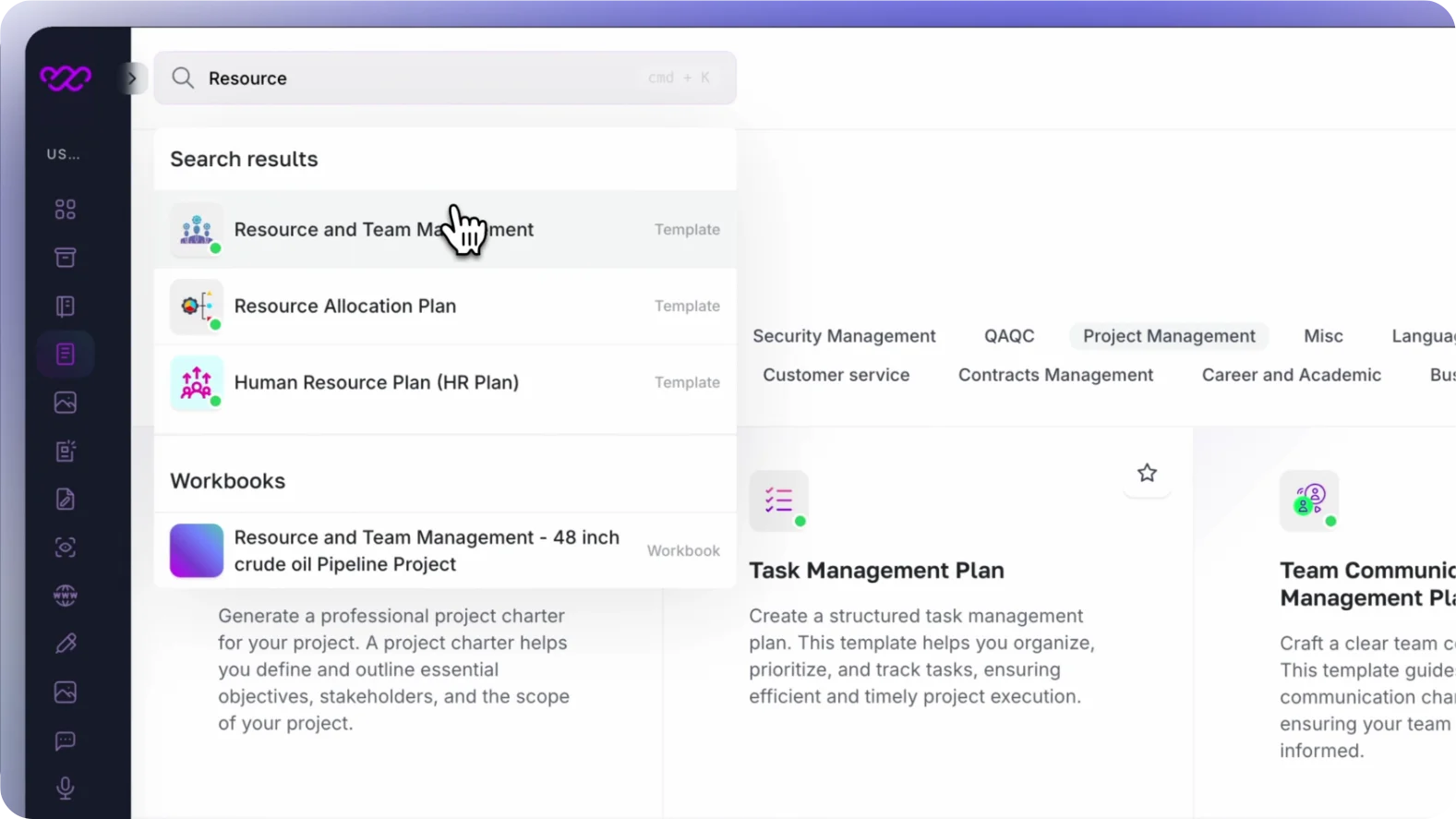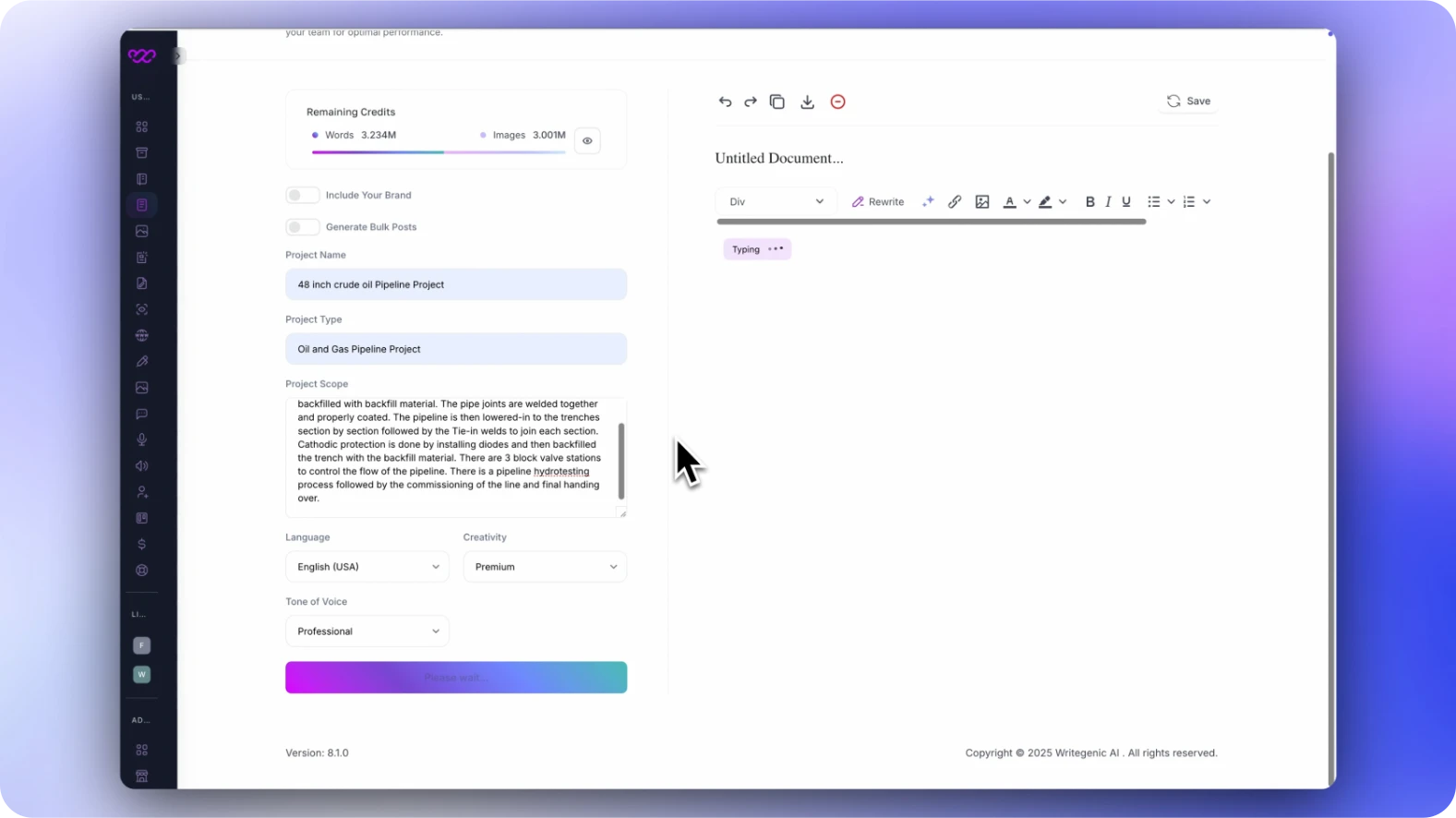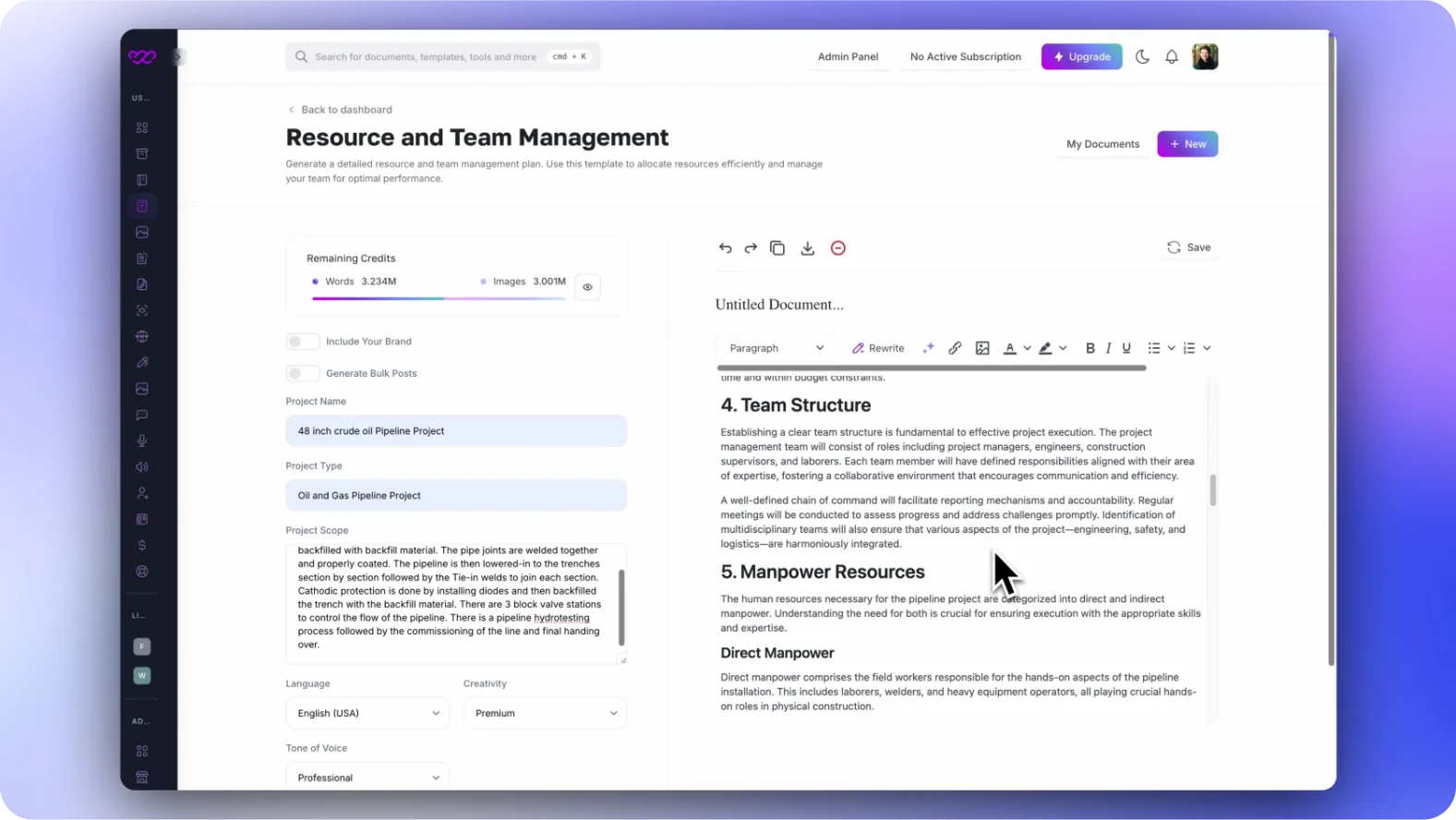Create a Resource Management Plan in 5 Steps

Resource management plan is strategic planning, arranging, and application of financial, human, and technological resources for the provision of certain organizational goals in an efficient way. Knowledge of what resource management is and how it can be applied could make a difference in today’s busy business environment.
This handbook will assist you in starting to become a master of resource management, making your projects not only successful but also sustainable. Whether you are a business entrepreneur or a project manager, good resource management plan can enhance your team’s productivity and creativity. Using the right tools and the right mindset, you can leverage your resources and lay the foundation for success.
Statistically, an effective resource management plan can increase productivity by up to 25% and reduce the cost of a project by almost 20%. In the context of AI Project Management, these benefits are even more pronounced, as intelligent systems optimize resource allocation in real-time. According to the Project Management Institute report, organizations with effective resource management plan have a 38% chance of delivering projects within budget.
This amplifies the need for a robust understanding of resource management plan, especially in project-driven industries. The benefits are clear: lower costs, higher productivity, and enhanced project success rates. Whether you’re coordinating work resources, financial resources, or material assets, understanding how to manage your resources effectively can lead to significant improvements in your operational outcomes.
Table of Contents
Why Do We Need a Resource Management Plan?

Benefits of Resource Management
The benefits of effective resource management plan go beyond the mere achievement of project goals. By properly allocating your resources, you can enhance collaboration among teams, streamline processes, and motivate employees.
Effective resource management allows you to identify problems early on before they become an issue, so you can take action ahead of time. A good resource management plan also makes it easier to be transparent because stakeholders can obtain a clear picture of project progress and resource utilization.
For businesses, this openness translates into better decision-making and resource allocation, which ultimately means a more organized and efficient operation.
In practical terms, organizations that prioritize resource management can expect notable improvements in various areas. Some of the most significant benefits are:
- Increased productivity of teams
- Reduced costs of operations
- Improved quality of work
- Improved stakeholder satisfaction
- Enhanced project timelines
Impact of Poor Resource Planning
On the other hand, poor resource management plan has ruinous implications. Lack of planning may lead to project postponement, inflation in expenses, and poor personnel morale.
Where resources are not efficiently deployed, you may experience that your personnel feel stretched too thin or left with nothing to do, slowing down work rates and sowing seeds of frustration. Bad supervision may also lead to stakeholders remaining in the dark about project updates, which is translated into compromised trust and backing.
Consider this: in a Standish Group study, poor resource management plan is one of the top reasons projects fail, with almost 70% of IT projects failing to meet their original scope, timelines, or budgets. This statistic emphasizes the critical need for effective resource planning.
If companies disregard the role of effective management of resources, the consequences may be catastrophic and extend beyond one project to encompass the entire business performance.
Why is Resource Management Important?
Resource management is vital since it is the foundation upon which successful project and operation implementation takes place. Without resource management plan, teams tend to lose focus quite easily, which results in inefficiencies and duplications of work. It greatly determines the level at which resources are distributed across different components of a project and thus is imperative to both achieving short-term targets and long-term targets.

Using proper resource management plan, organizations can ensure that they operate at full capacity, maximize their resources, and create value beyond the delivery of a project.
In addition, resource management enables strategic alignment within an organization. It makes it possible for leaders to prioritize projects based on their importance in alignment with overall business objectives, ensuring that resources are aligned with what matters most.
Investing time and money in establishing effective resource management plan provides a solid foundation that your business can leverage as it develops and evolves.
4 Resource Management Methods

1. Resource Allocation
Resource allocation is the initial step in a well-planned resource management plan. It involves the process of identifying the various resources needed for a project and allocating them to ensure balanced workloads and optimum performance.
Smart resource allocation doesn’t just consider the amount of resources needed but also their quality and timing. This prevents idle time and ensures tasks are done within deadlines.
Effective resource allocation tips:
- Evaluate team members’ skills prior to allocating roles
- Use software for managing resources to visualize allocation
- Have open communication to easily make room for changes
2. Resource Utilization
Resource utilization is concerned with the efficient use of each resource in executing project work. Greater utilization generally means that resources are utilized efficiently, which leads to improved productivity.
But it is important not to over-balance utilization as this may cause burnout. Over-utilization of resources results in poorer output quality and employee dissatisfaction.
Improvements in resource utilization include:
- Monitoring time taken to do tasks to detect inefficiency
- Soliciting feedback from team members on workload
- Periodic review of resource metrics to identify areas of improvement
3. Resource Forecasting
Resource forecasting is the process of projecting future resource needs based on past performance and current project requirements. This process allows project managers to anticipate and manage possible resource shortages or surpluses in advance.
The application of data analytics and trend analysis improves the accuracy of the forecast, allowing teams to make better-informed decisions regarding planning.
Effective forecasting involves:
- Examining past data to determine trends
- Meeting with team members to identify future project needs
- Updating forecasts as project plans evolve
4. Resource Leveling
Resource leveling is a technique of aligning resource requirements with their availability. It prevents overloading of resources by rescheduling activities to available dates or rescheduling workloads among team members.
This way, you can maintain project schedules while maintaining your resources in balanced utilization.
Steps for effective resource leveling are:
- Reviewing project schedules to discover constraints
- Reassigning tasks to balance individual workload
- Keeping lines of communication open for ongoing adjustments
Types of Resource Management

1. Human Resource Management (Manpower Resources)
Human resource management oversees individuals within an organization. This is from the recruitment and training perspective to dealing with performance and worker engagement.
Motivating and getting the workforce aligned with business goals is important to any organization that wants to perform to the best capacity.
Practices to enhance HR management:
- Organize employee feedback surveys from time to time
- Encourage opportunities for professional growth
- Foster a company culture of teamwork and inclusiveness
2. Financial Resource Management (Cost Resources)
Financial resource management deals with budgeting, accounting, and financial planning to ensure an organization utilizes its financial resources effectively.
Tracking all areas of expense and ensuring there are adequate funds available for projects can make a significant difference in the success of an organization.
How to manage financial resources:
- Establish financial KPIs to track performance
- Track budgets on a regular basis to ensure compliance
- Engage stakeholders in financial planning
3. Material Resource Management (Material Resources)
Material resource management plan refers to the strategic positioning and management of materials and Inventory in an organization. This ranges from raw materials to equipment.
Proper management of material resources ensures that production operations are smooth, without delays and wastage.
Ways of managing material resources:
- Adopt inventory tracking systems
- Optimize reorder points to avoid stockouts
- Monitor supplier performance for reliability
How to Create a Resource Management Plan
Creating an effective resource management plan involves a step-by-step approach. It requires attention to detail and a clear understanding of your project requirements. Here’s how to get started:

Step 1: Resource Planning and Budgeting
Start your plan by defining your project objectives and goals clearly. Then, determine the resources required to accomplish them, such as time, money, and personnel. Create a budget that covers all the costs of resources so that it aligns with your project objectives.
Step 2: Identify Resources (Capacity Planning)
Determine how capable your resources are in skills and time. Create lists of resources required in terms of material, human, or financial resources. Having a clear idea of what your team can do will make planning and forecasting more reliable.
Step 3: Allocate Resources
Allocate your resources as per your identified needs. Allocate tasks to team members considering their skill levels and current workload to avoid overloading and maintain productivity.
Step 4: Monitoring of Resources
After you have assigned resources, install monitoring systems to monitor utilization and ensure adherence to the plan. This allows you to notice differences early and make adjustments to maximize overall effectiveness.
Step 5: Resource Optimization
Review and optimize your resource plan regularly. Use team members’ and stakeholders’ input to streamline processes so that your projects remain on track and within budget.
How to Create a Resource Management Plan Using Writegenic AI
We know that it is very tough and time-consuming scenario when we prepare a document manually, therefore in Writegenic AI we have designed a specially trained AI algorithm which prepares Resource Management Plan document in seconds. It eliminates the human errors and saves plenty of time.
Below steps will help you to develop a resource management plan document using Writegenic AI in 3 easy steps in less than 5 minutes.
Step 1: Open Resource and Team management Tool
First, we needed to register on WriteGenic AI. It’s relatively simple to join and is based on a form to complete with some data. If registration was successful, we see its dashboard. It’s friendly and very simple.

Option 1: To locate the “Resource & Team Management Plan” tool, navigate to the search box on top of the WriteGenic AI dashboard. Type in the name of the tool you are looking for, and it will be displayed. Simply click on it to launch it.
Option 2: Alternatively, navigate to the left navigation menu, click “AI Writer,” and select the “Project Management” category of templates. You will arrive at the “Resource & Team Management Plan”.
Step 2: Enter The Project Specific Information
The second step is to enter the necessary project details such as Project Name, Project Scope, and Team details as given below:

Make sure you have entered as much information as you can to make the document perfect and specific to your project or business.
Step 3: Generate the Document
After entering all the necessary information, just click on the Generate button, and WriteGenic AI will automatically create your personalized Resource & Team Management Plan document within a few seconds.

With Writegenic AI,
See it in action!
How to Efficiently Manage Resources
Efficient management of resources requires taking the initiative. Begin by establishing communication lines between teams to enlighten each member on project goals. Encourage collaboration and allow space for feedback to make necessary adjustments.
The application of resource management software like e.g. Oracle’s ERP goes a long way in simplifying the process by centralizing all relevant information regarding the use of resources and the deadline for a project.
Besides, setting KPIs for resource management allows teams to measure performance and make changes as necessary. Periodically checking your resource management plan will also ensure that it remains aligned with your business and project objectives.
How to Select the Ideal Resource Management Tool
Selecting the ideal tool to manage resources is critical. In picking resource management software, consider the following:
- Ease of use for your team
- Capability for integration with current tools
- Customization to suit your business needs
- Scalability to grow with your business
Do not neglect to check user ratings and maybe try demos to ensure you select the optimal fit for your company’s unique needs.
Drive Results by Managing Resources with the Right Tools
Adopting the right tools can enhance your capacity to efficiently manage resources. Resource management software enables you to automate, improve communication, and gain real-time visibility into project status. This can lead to improved decision-making, better resource allocation, and enhanced project success.
By emphasizing the alignment of people, process, and technology, you can be assured that your management strategies are productive. Equipped with the right tools, you can enhance productivity, enhance collaboration, and ensure that your projects meet their potential.
Resource Management FAQs
What is resource management?
Resource management is strategic planning and optimizing resources to achieve some organizational objectives effectively.
Why is resource management important?
Resource management is necessary as it helps to maximize efficiency, reduce waste, and align resources with project goals, thus ensuring better results.
What are project management resources?
The main types of resources include human resources, financial resources, and material resources.
How can I improve resource allocation?
Improving resource allocation involves assessing skills, utilizing management software, and maintaining open communication.
What is resource forecasting?
Resource forecasting is the process of forecasting future resource needs from historical data and current project requirements.
What are the benefits of effective resource management?
The benefits are higher productivity, reduced cost, improved quality, and increased stakeholder satisfaction.
How do I choose optimal resource management software?
Understand what you require, consider ease of use, integration with other software, and read the user reviews before deciding.
What happens if resources are not managed well?
Mismanagement leads to delays, cost overruns, and loss of morale within the team.
How do I ensure my resource management plan works?
Constantly review and update the plan with the team feedback and project progress. Use Writegenic AI to generate the perfect plan for you.
What are the methods of resource leveling?
Methods include rescheduling the project plans, workload rescheduling, and transparency of communication.
Final Thoughts
In short, it is essential to master the skill of resource management for any organization to be successful in today’s competitive world. By learning various aspects of resource management, applying important techniques, and employing the right tools, your organization will be able to achieve greater productivity and operational success.
Remember that the idea of successful resource management is maximizing output from input with minimum wastage, and each project needs to contribute toward your overall business goals.
Starting with resource management, start small, keep on learning, and adjust strategies according to your organizational situation. Regular improvement in the processes of resource management will ensure not just the success of the projects but the long-term organizational growth.
Say goodbye to time-consuming work of drafting documents manually and welcome Writegenic AI which drafts Resource Management Plan document for you within seconds. Join 1000s of project management & business professionals who are utilizing Writegenic AI as a part of their professional day-to-day activity.
Welcome the challenges and possibilities of resource management, with the understanding that with each move forward, you’re creating a road to success for your team and organization.
With Writegenic AI,
Create any document in less than 5 minutes!